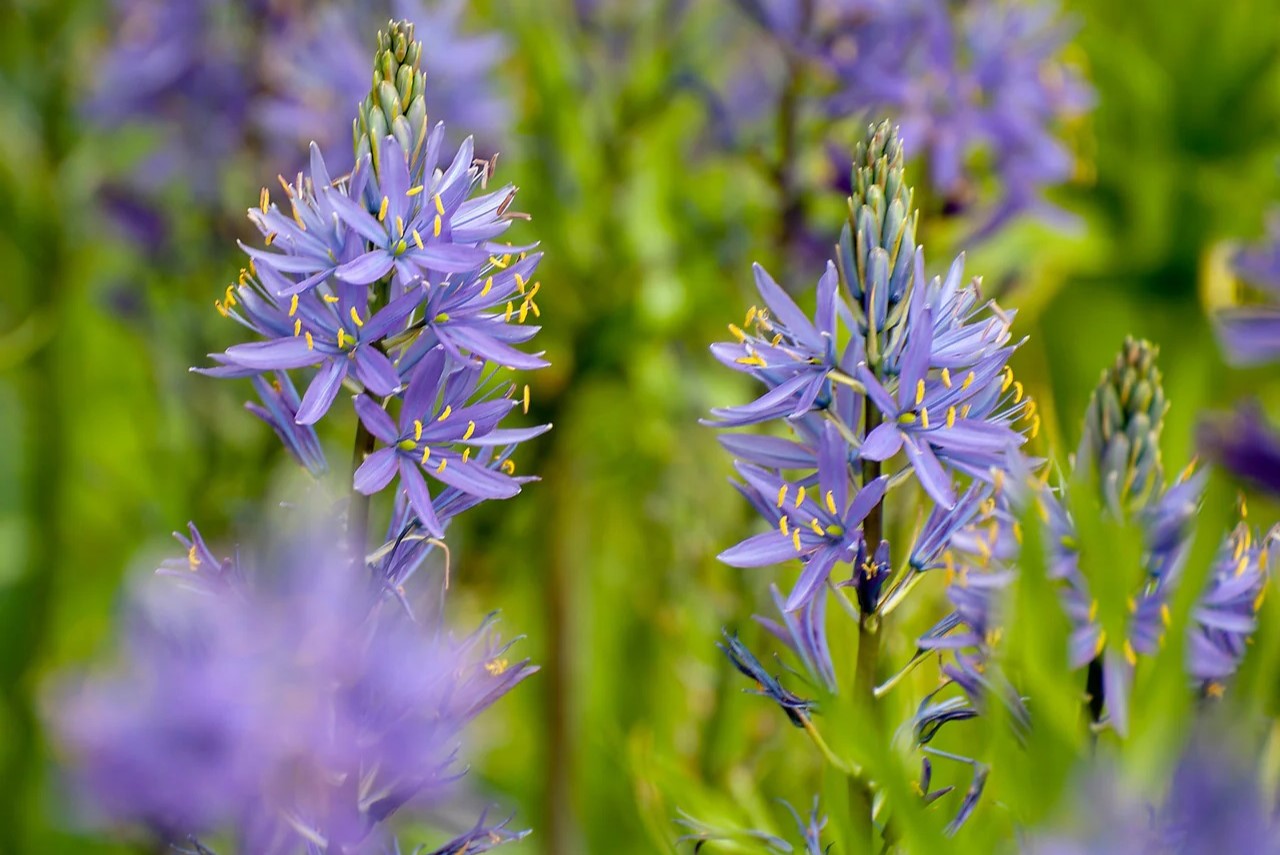
Quamash, also known as camas, is a fascinating plant with a rich history and unique characteristics. Native to North America, it has been a vital food source for indigenous peoples for centuries. But what makes this plant so special? Quamash boasts beautiful blue flowers that bloom in spring, adding a splash of color to meadows and gardens. Its bulbs are edible and were traditionally roasted or boiled. Did you know that quamash played a crucial role in the diet of the Lewis and Clark expedition? This versatile plant is not just a pretty face; it’s a survivor, thriving in various environments. Ready to learn more about this incredible plant? Let's dive into 15 intriguing facts about quamash!
Key Takeaways:
- Quamash, also known as Camas, is a historically significant and nutritious plant native to North America, with edible bulbs rich in carbohydrates, fiber, vitamins, and minerals.
- Quamash has a rich history among Native American tribes, and it is now making its way into modern cuisine. Efforts to conserve and cultivate Quamash are ongoing to protect its natural habitats.
What is Quamash?
Quamash, also known as Camas, is a flowering plant native to North America. It has been a significant food source for Indigenous peoples for centuries. Let's dive into some fascinating facts about this remarkable plant.
Historical Significance of Quamash
Quamash has a rich history, especially among Native American tribes. Here are some intriguing historical facts:
- Indigenous peoples, particularly in the Pacific Northwest, relied on Quamash bulbs as a staple food source.
- The Lewis and Clark Expedition documented Quamash during their journey, noting its importance to local tribes.
- Quamash bulbs were often traded among tribes, highlighting their value and significance.
Botanical Characteristics of Quamash
Understanding the plant's physical attributes can help appreciate its uniqueness. Here are some key botanical facts:
- Quamash belongs to the genus Camassia and is part of the asparagus family.
- The plant produces star-shaped flowers, usually blue or purple, which bloom in late spring.
- Quamash bulbs are edible and resemble small onions or garlic cloves.
Nutritional Value of Quamash
Quamash isn't just historically significant; it's also nutritious. Here are some nutritional facts:
- Quamash bulbs are rich in carbohydrates, making them an excellent energy source.
- They contain inulin, a type of fiber that promotes digestive health.
- Quamash bulbs also provide essential vitamins and minerals, including vitamin C and iron.
Quamash in Modern Cuisine
Quamash has found its way into contemporary dishes. Here are some culinary facts:
- The bulbs can be roasted, boiled, or baked, similar to potatoes.
- Quamash is sometimes used in gourmet recipes, adding a unique flavor to dishes.
- Chefs often incorporate Quamash into salads, soups, and stews for a nutritious boost.
Conservation and Cultivation of Quamash
Efforts to preserve and cultivate Quamash are ongoing. Here are some conservation facts:
- Quamash habitats are threatened by urban development and agriculture.
- Conservationists are working to protect natural Quamash meadows and restore degraded areas.
- Gardeners can cultivate Quamash in home gardens, provided they mimic the plant's natural environment.
Quamash is a plant with a storied past and promising future. Its historical significance, nutritional value, and unique botanical characteristics make it a fascinating subject for anyone interested in plants and their uses.
Quamash: A Hidden Gem
Quamash, also known as Camas, is more than just a pretty flower. This plant has deep roots in Native American culture, serving as a vital food source for centuries. Its star-shaped blue flowers not only add beauty to landscapes but also play a crucial role in local ecosystems. Quamash thrives in moist meadows and prairies, making it a resilient and adaptable plant.
Understanding the importance of Quamash helps us appreciate the rich history and biodiversity it represents. Whether you're a botany enthusiast or just curious about nature, Quamash offers a fascinating glimpse into the natural world. So next time you see those striking blue blooms, remember the incredible story behind them. This plant is a testament to the intricate connections between nature and human culture.
Frequently Asked Questions
Was this page helpful?
Our commitment to delivering trustworthy and engaging content is at the heart of what we do. Each fact on our site is contributed by real users like you, bringing a wealth of diverse insights and information. To ensure the highest standards of accuracy and reliability, our dedicated editors meticulously review each submission. This process guarantees that the facts we share are not only fascinating but also credible. Trust in our commitment to quality and authenticity as you explore and learn with us.


